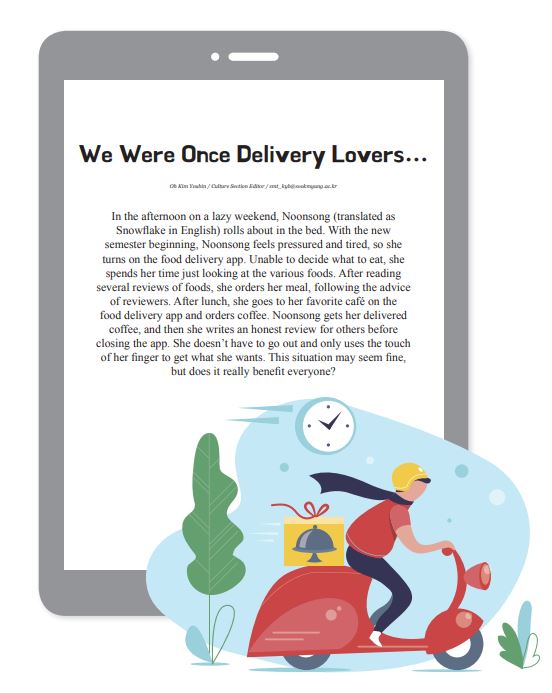
In the afternoon on a lazy weekend, Noonsong (translated as Snowflake in English) rolls about in the bed. With the new semester beginning, Noonsong feels pressured and tired, so she turns on the food delivery app. Unable to decide what to eat, she spends her time just looking at the various foods. After reading several reviews of foods, she orders her meal, following the advice of reviewers. After lunch, she goes to her favorite café on the food delivery app and orders coffee. Noonsong gets her delivered coffee, and then she writes an honest review for others before closing the app. She doesn’t have to go out and only uses the touch of her finger to get what she wants. This situation may seem fine, but does it really benefit everyone?
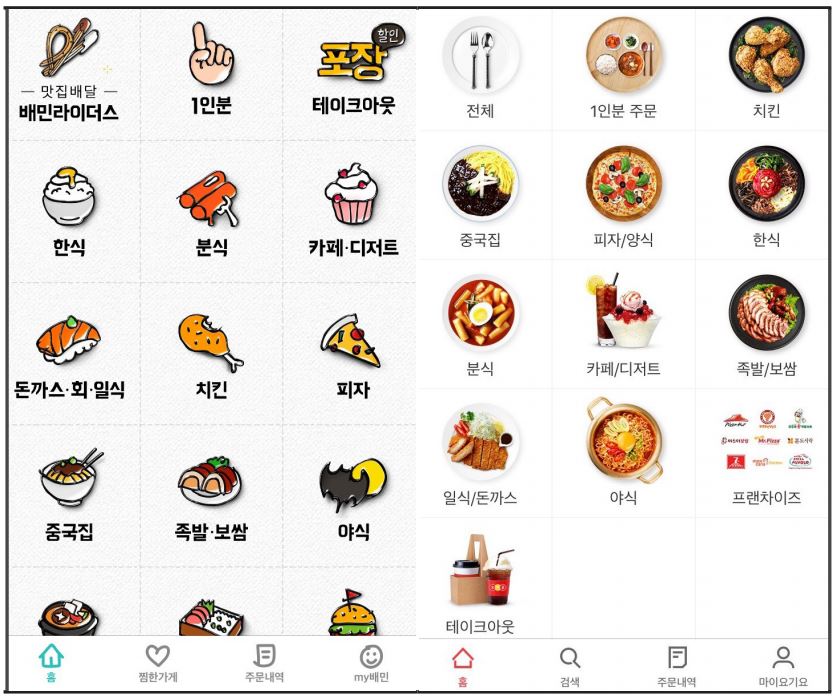
Touch, Anytime, Anywhere
Delivery is a service that brings goods to people who don’t have the time to go directly to the shop. Most service companies meet the needs of consumers by providing a delivery service. Among the delivery services are mail, furniture, appliances, and so on, but more recently, food has become the largest item being delivered today. Especially, in recent years, there has been a boom in food delivery apps, and the number of users of those apps has soared. In other words, the market is getting bigger and bigger. In fact, the scale of the food delivery market was 15 trillion won in 2017, which is 10 times greater than it was in 2013.1) As food delivery is now a recognized cultural business in Korea, there is a need to examine how its rapid growth came about and problems it is causing.
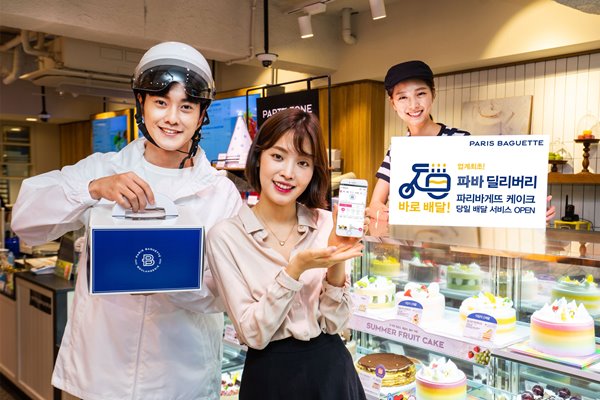
Photo of Paba Delivery
The food delivery service industry has experienced rapid growth through a number of factors. First, there is the appearance of food delivery applications. Use of delivery applications enables people to conveniently order food using only their fingers. Especially for those who have call phobia, or the fear of phoning strangers, the apps are a welcome friend that makes ordering easy. Second, food is delivered even at late night hours. Korea has an established culture of enjoying food at night. Therefore, delivery services also provide various foods until late night, and some apps are 24 hours, which fit perfectly into Korean culture. Finally, food delivery apps are not local. Before their appearance, some areas could not receive delivered food, even if the customer offered to pay a bit more for the food because the areas were out of the delivery area jurisdiction. However, now vendors deliver their food to all areas of the city, and the service is fast to most regions, though at times there is an additional charge. This service has met the needs and wants of Korean customers and has brought about the exponential growth in the food delivery industry.
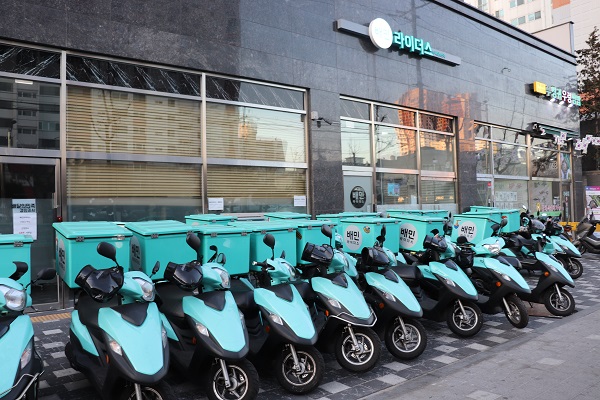
Photo of BaeMinRiders
Bigger and Bigger
The food delivery culture’s rapid growth has emerged with the introduction of food delivery applications. The first applications that were introduced in the industry were Baemin, Yogiyo and Baedaltong which are still used today by numerous people. They are simply a link between restaurants and consumers. Most of these apps divide the food according to type, and the system allows customers to write a review once the food has been delivered. In addition, these apps allow restaurants to communicate with their consumers through their reviews. However, since then, the apps have evolved beyond merely connecting restaurants and customers. More advanced apps have emerged, and they include Baeminriders, Foodfly, and Ddingdong. These apps take control over the delivery service of restaurants. While seemingly similar, early apps just collect restaurant’s leaflets in one app, whereas newer apps hire delivery personnel and take on the responsibility of delivering the restaurants’ orders.
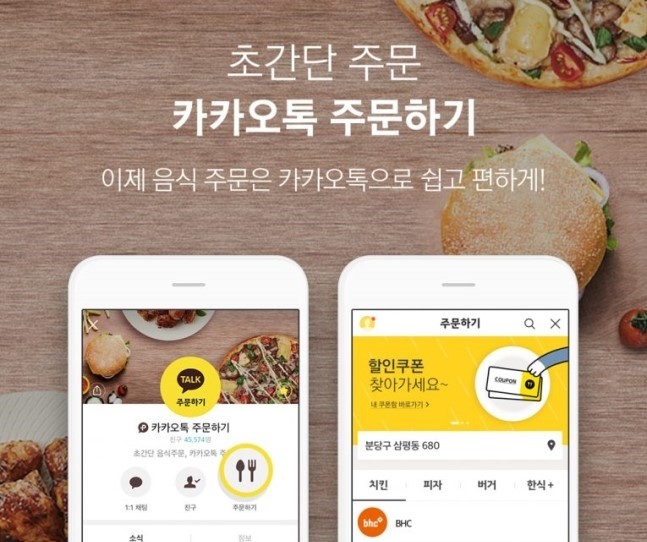
This is the process of ordering food using Kakao application
In addition to the developments in delivery apps, the food industry has also started focusing on its delivery service. Recently, the eateries and cafés have made contracts with delivery companies or begun introducing their own delivery services. For instance, Paris Baguette now has a delivery service for about 1,100 of its franchises. It is called Paba Delivery, which delivers cakes, sandwiches, and bread. Along with Paris Baguette, a number of other restaurants such as VIPS and Seasonstable have also started a similar type of delivery service across its franchises. Kakao also recently entered the food delivery service industry through its KakaoTalk order service recently, and it provides a wide range of options from bigger restaurants to the smaller neighborhood restaurants. That is, with developments in applications, consumers can now order all kinds of food straight to their home, even items like ice-cream, coffee, and bread.
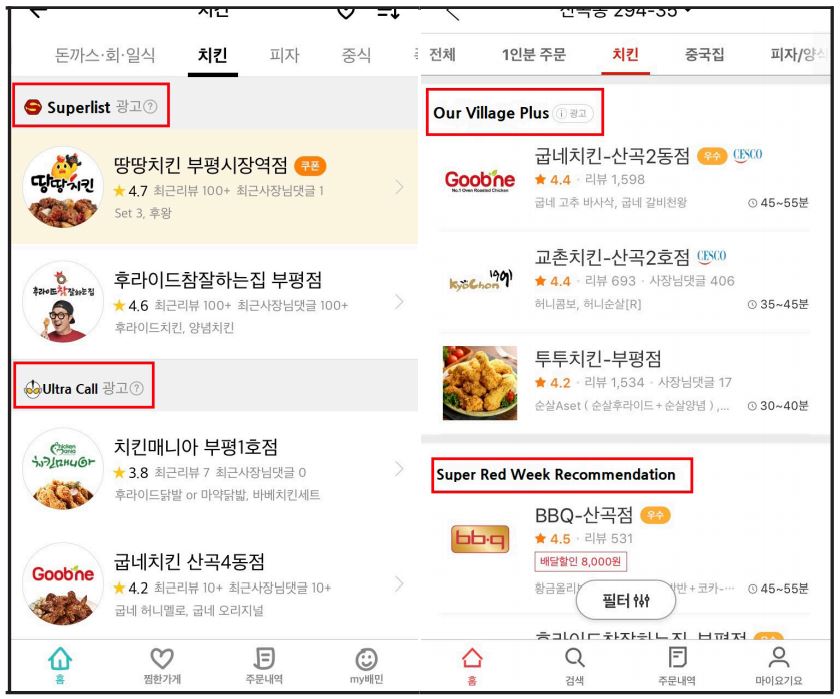
Attack of Delivery Apps
While food delivery services make life more convenient, there are problems related to the provision of those services. The first problem is the financial burden of a sole proprietorship. Shops faced increased costs of advertising on delivery apps due to the monopoly structure of the delivery app market. Currently, there is a serious competition between shops in order to be top on the ‘Superlist’ on the app. Lee Seokhoon, a professor of Sejong University, said, “The Superlist, designated for private auction, has brought about price rises by inducing excessive advertising competition among stores.”2) In the past, food advertisement was only incurred offline, but now with the appearance of delivery apps, the shop owners should cover both the burden of offline and online advertising expenditures. Plus, commissions also can be one of the financial burdens. In the case of Yogiyo, there is a brokerage commission of 12.5%, an external payment commission of 3%, and a tax of 1.5%. In total, that’s an extra 17% expense for shop owners. For shop owners registered only on one app, the 17% could be affordable, but to survive and succeed, shop owners must register with at least two or more apps, so they need to budget at least one million won just for advertising.3) Like this, sole proprietorships are suffering heavy financial burden from the increase of advertising costs and the commission charged by app companies.
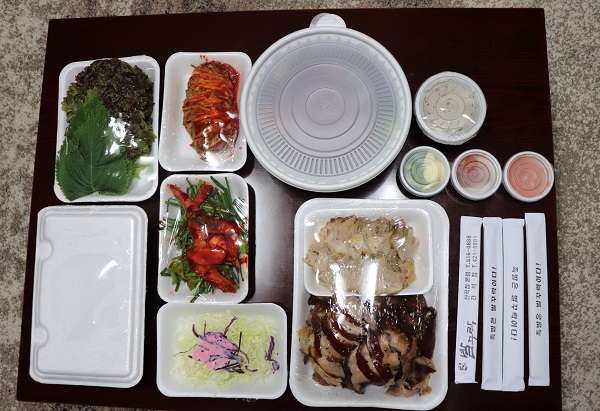
There are many plastics delivered when ordering only one food
The next problem is an environmental problem. In recent years, the government has been campaigning for the reduced use of plastics through legislation. However, food delivery is not following the trend. Most delivered food comes in disposable containers. Because there are numerous deliveries each day, the number of plastics is increasing. In fact, when one orders Bossam, the food is delivered with more than 10 plastic bowls containing garlic, sauces, and others. Kim Mihwa, Chair of the Korea Zero Waste Movement Network, said “Regulations on the use of plastic cups in cafes was successfully implemented in under 100 days. However, in the case of food delivery, they continue to use disposable containers and turn a blind eye towards regulations.”4) Although people are aware of the plastics problem and are trying to cut down on their plastic usage, there is still no clear alternative for the food delivery industry, so despite campaigns, the amount of plastic garbage in Korea has not yet declined.
Pain of Convenience
Until now the food delivery service has operated without any restriction. Companies charge high commissions, use non-recyclable plastics, and provide comfort to consumers. Though we love food delivery services for our comfort, now is the time to seriously consider the impact on society and the environment. Our pleasure and convenience are important. However, the pain suffered from economic burden of sole proprietorships and the environmental issues caused by excessive use of plastics can no longer be ignored. All individuals and the government should make an effort to ensure comfort and minimalize problems.
1) Kim Gyeongeun, “”Ice Flakes with Syrup at Home”…Is There Nothing that Cannot Be Delivered?”, MoneyS, September 20, 2018
2) Jang Bomyi, “The Monopoly Structure of Delivery Apps…The Advertising Expense of Sole Proprietorships Is About 100,000 Won”, Newspim, October 1, 2018
3) Same as 2
4) CBS Radio, “Not Enough Only Not to Use of Plastic Cups...Delivery Apps Turn a Blind Eye”, Nocutnews, November 20, 2018


